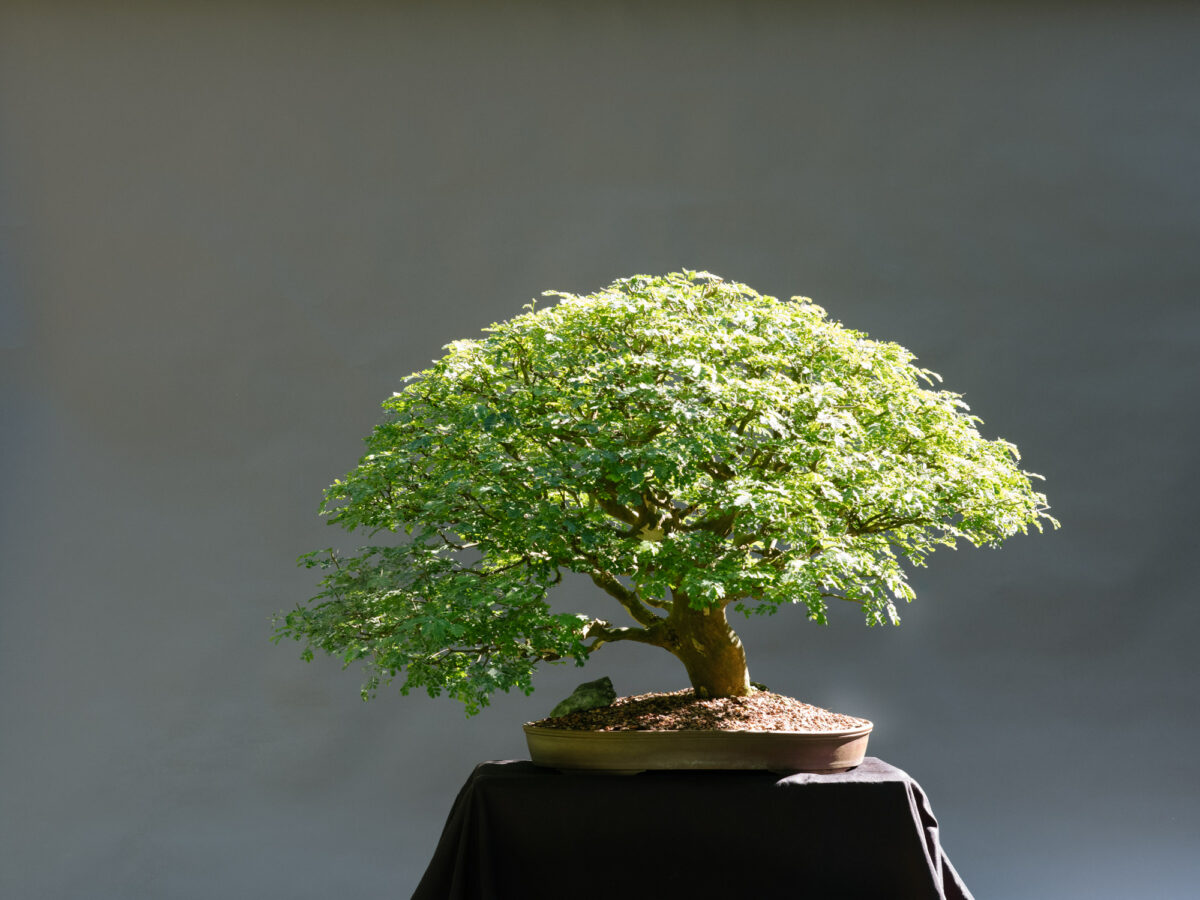Common Name: Brazilian Raintree
Scientific Name: Pithecellobium tortum
Characteristics
- Bark – light tan to light reddish brown / smooth / exfoliating
- Branches – brittle with age / zigzag like pattern / cantilever / thorns
- Leaves – alternate / obovate / bipinnately compound / light to medium green
- Flowers – raspberry shaped buds / fragrant pompom shaped flowers / yellow – white
- Fruit – pod
Growing Conditions
- Air – good air circulation / humid environment
- Sun – morning to midday sun is best / leaves may close in high heat or intense light / good sun promotes smaller leaves
- Water – moist not wet - dry down not dry out / morning to midday is best / new leaves increase transpiration
Maintenance
- Roots – Repotting is best when night temperatures are consistently above 60 degrees. Well-draining soil. Protect from sun for 2 weeks after root pruning. *Sometimes roots can appear deformed and disproportionate. This can resemble root knot nematodes, which have negative consequences. However, they are more commonly nitrogen fixing nodules, which are common with members of the legume family.
- Trunk – Properly clean and protect large cuts from moisture as cuts can be slow and/or difficult to heal. Watch for wire scarring. Healthy trees can be heavily reduced.
- Branches – Branches become more brittle and difficult to bend with age. Use wire to set initial primary and/or secondary branch structure where applicable. Watch for wire scarring. The clip-n-grow technique is well utilized. *When pruned Brazilian Raintree branches will dieback to the previous node - make cuts within the internode, furthest from the last auxiliary bud you want to remain on a branch. Making cuts too close to the desired node will cause that node and the internode to dieback to the previous node or the nearest axillary bud. Properly clean and protect large cuts from moisture. Healthy trees can be heavily pruned. Protect from sun for 2 weeks after heavy branch pruning.
- Leaves / Flowers – Leaf size can be controlled by root maturation and pinching new leaf tips. Defoliation is not necessary but can be utilized on mature healthy specimen. Partial defoliation during the growing season can increase airflow, visual design, and reduce predatory insects and fungus. Watch for insects and related fungus on flowers and new stem growth.
Hardiness: tropical evergreen / zone 10 -11 / protect below 45 degrees
Propagation: Cuttings are not always reliable. Air-layers are very reliable. Can be produced by seed. Night temperatures must be consistently over 60 degrees for best results.
Potential Issues
- Insects – aphids / ants / scale
- Fungus – sooty mold on leaves and branches caused by aphids / root fungus can occur because of poor soil or drainage
Additional varieties used in bonsai: Brazilian Raintrees can have varying nuances depending on genetic mutations. Some can have more intense character than others, come with or without thorns, and may or may not flower at all.
*NOTES – Outside Only. Native to the South America. Member of legume family.



